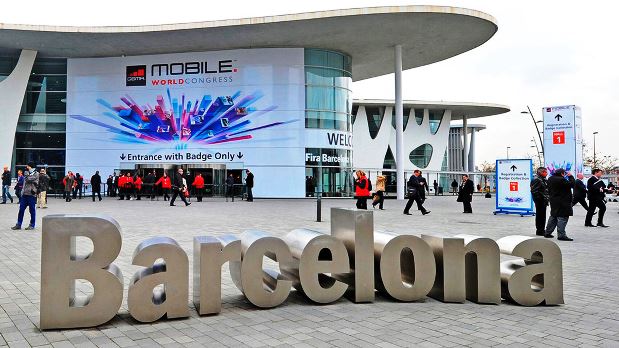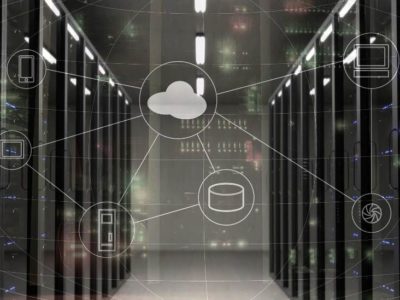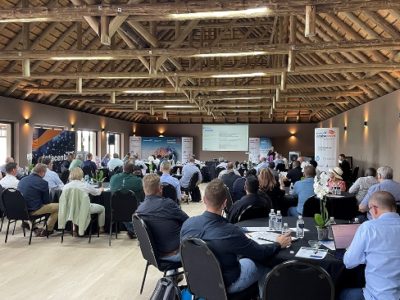Strand Consult’s marks its 21st year of coverage of the Mobile World Congress (MWC) with this annual preview Research Note. Each year Strand Consult offers its growing global audience its preview of the MWC’s themes and keynotes with critical reflections on the significance of the gathering of world’s mobile telecom industry leaders.
RELATED: Strand Consult’s predictions for 2024
MWC 2024 presented by the GSM Association (GSMA) expects to gather 93,000 total attendees in person and online. While up from last year’s 88,500 people, it falls below the pre-pandemic level of 109,000 participants.
Event Franchise: Exciting Gathering or Tired Refrain?
Having participated in MWC for over 25 years, Strand Consult puts new trends in a historical perspective. MWC is GSMA’s film franchise; think James Bond, Star Wars, or Marvel’s Cinematic Universe. There is a new movie each year with a similar plot and cast of characters. Some movies reinvent the franchise and create spinoffs; others have short but profitable lives (Harry Potter, Lord of the Rings); others burn down slowly.
MWC is on replay and needs a reboot. Strand Consult studies the event line up for weeks in advance to find something new, but it observes that MWC’s format, content, message, and keynote speakers are largely the same year after year. The main theme is the current mobile generation (5G) with fill-in-the-blank supplementary themes: 5G and Beyond, Connecting Everything, Humanising AI, Manufacturing DX, Game Changers and Our Digital DNA. While AI is the hot topic, the other themes are worn out.
2024 MWC – Same procedure as last year.
The MWC program includes the familiar lineup and opening of go-to mobile industry CEOs who will likely repeat what they said before: Telefonica CEO and Chair of GSMA José María Álvarez-Pallete; Margherita Della Valle, CEO Vodafone; Christel Heydemann, CEO Orange; and Jie Yang Chairman, China Mobile. The three first speakers open the show on Monday at 9.30 and speak again on Monday’s Keynote 4 at 16.30 along with Tim Hoettges of Deutsche Telekom, who also appears in Monday’s Keynote 2 at 11.30.
Margherita Della Valle became CEO last year after 20 years of increasing positions at Vodafone. Since moving from CFO to CEO, Vodafone’s share price has fallen some 30 percent. It may be that the management team has benefitted, but not shareholders.
In football (or soccer), players and coaches who don’t win are fired. Coach Thomas Tuchel of Football Club Bayern Munich was canned this week because he failed to deliver results. However, in telecommunications, the players and coaches are celebrated even when they lose, consoled with the hope that maybe next year will be better.
Such mediocrity is display with the recent The State of Digital Communications 2024 report from the European Telecom Operators Association (ETNO), demonstrating a decade of decline and underinvestment in Europe. While the intention of the report is to spur European policy change, it can also be read as an industry whose leaders cannot organize themselves effectively in their trade association.
Attendees pay a fortune to attend MWC and would likely enjoy more spice on the first day instead of a continuous play of the same CEOs two times in one day. Presumably, the choice of speakers reflects the GSMA’s priorities among the member operators. It’s time for GSMA to move out of its comfort zone and feature some new keynote CEOs.
GSMA represents over one thousand mobile operators around the world; people and companies which provide mobile operations on every continent and in every condition. There are many exciting stories GSMA can tell from its own members and more exciting people to feature from these ranks. Yet most of these folks and firms will not be on the stage.
An interesting speaker would be Jørgen Bang-Jensen who in 10 years he developed the fourth operator in Poland, Play/P4, into the largest operator in the country, ahead of T-Mobile, Orange and Plus. He led the company to an IPO and subsequently sold it to Iliad for some €3.5 billion.
Of course, keeping a conference exciting and ongoing is a difficult task. Similar sputtering has been observed at the World Economic Forum in Davos and Consumer Electronics Show in Las Vegas. However, events like the Paris Air Show and Frankfurt Book Fair have stood the test of time. The decline of an event franchise can reflect a downturn in the industry or a loss of mission. GSMA itself has limited success to deliver systematic policy for the mobile industry. Consolidation, spectrum allocation, taxation, and telecom regulation are largely unfavorable for the industry globally and have material financial impact.
GSMA is not so much a trade association as it is an event company. CEO Mats Granryd’s annual $2.4 million compensation does not appear to be tied to member or industry profitability. It could be a function of event revenue. MWC’s top sponsors are consultants (Accenture, EY, KPMG, PWC), cloud providers (Snowflake, Microsoft, Palo Alto Networks) and of course Huawei. The other 40 sponsors companies work in the partner ecosystem. Some 2400 companies exhibit. Of course, these companies come because they want to sell their services to mobile operators. Notably the two mobile operator sponsors are Etisalat and STC.
The single biggest beneficiary of the mobile industry investment is Apple Inc., but they never speak sponsor, or exhibit at MWC.
In any event, some 90,0000 people come to MWC because of the networking opportunities. There are many exciting people who make a difference, but they are not necessarily on the stage. Here is Strand Consult’s assessment of sessions worth checking out.
Behind the curtain: The Ministerial Programme
Accordingly “centre of the policy debate” is not the keynotes but the Ministerial Programme in which lawmakers and mobile leaders discuss the critical issues. However, these sessions are closed to press and the public.
It is understandable that policymakers want a confidential space to discuss problems, and MWC offers that opportunity. At the same time, GSMA could help operators address their challenges more effectively with better global communication. As such, GSMA should consider livestreaming these Ministerial sessions. In fact, investors could get on board if they had a better sense of the problem. The difficult topics should be brought into the open.
A case in point is the blandly named Towards a New Infrastructure Investment Framework on Tuesday at 11.45. Operators which want to know more about fair share and broadband cost recovery will likely miss this panel all together for lack of the proper keywords, but they should attend. It features the two most consequential regulators on this topic: Brendan Carr of the Federal Communications Commission and Carlos Baigorri of the National Telecommunications Agency (Anatel), Brazil.
Carr and Baigorri will likely describe the government-driven efforts to broaden the base of financial contributions to broadband network infrastructure and create sustainable connectivity funds for low-income users. Importantly, these efforts are needed because many of the world’s leading digital companies expect that they should use mobile operators’ networks and the public’s radio spectrum for free. Strand Consult observes that both market-based and regulator-driven efforts for cost recovery are needed.
Strand Consult’s Global Research Project for Broadband Cost Recovery, Affordability, and Fair Share follows this issue globally and describes why operators in South Korea, USA, and other regions have succeed to drive their cost recovery agenda while European operators have faltered.
Related to the topic, the European Commission (EC) launched this week a consultation based on the “new initiative for the digital infrastructure tomorrow.” The title captures well that for more than a decade, the European Commission has put it off to “tomorrow” needed policy change. Strand Consult described the problem of slowing European Union broadband investment in 2014, when the gap was “only” €100 billion and there was a hope that the EU could catch up to USA and Asia.
The EC report is a farewell from Commissioners Thierry Breton and Margrethe Vestager, reiterating that they inherited the problem and distancing themselves from the fact that the gap has ballooned under their watch. The EU internet market has grown more complex with AI and cloud and the emergence of US and Chinese hyperscalers. The challenge has become more difficult to address, making successive commissioners even less likely to take it on.
All the same, speaker Renate Nikolay, Deputy Director-General for Communications Networks, Content and Technology, European Commission, presided over the consultation which offered European operators the perfect setup to bring fair share across the finish line, but European Telecom Operators Association (ETNO) and GSMA failed. They did not educate sufficient policymakers adequately nor did they cultivate the many stakeholders who would benefit. They assumed self-assuredly that their CEOs alone could sell the policy.
While the window of digital opportunity for Europe has passed largely, outside of a few exceptions. Investors have moved on from EU telecoms to Africa, where the value of its internet economy exceeds that of Europe. Appropriately, the panel also features Lacina Koné, Director General and Chief Executive Officer of Smart Africa, whose goal is to connect, innovate, and transform the African continent of 39 member states and more than 1.1 billion people.
Mr. Bocar Bar, CEO of the SAMENA Telecommunications Council, will moderate the important Digitising Government and Industry event in the Ministerial Programme. Mssrs. Bar and Koné serve on the United Nations Broadband Commission and lead essential efforts to drive connectivity goals for Africa and the rest of the world, importantly with concepts of broadening the base of contributions to infrastructure and affordability from the salient digital enterprises which use and benefit from broadband networks.
Geopolitical challenges
MWC features valuable sessions on geopolitical challenges, reflecting the growing importance of telecommunications infrastructure for the digital society. Nations must decide whether their digital societies will be based on democratic principles or authoritarian ones.
Two years ago to protest the invasion of Ukraine, GSMA cancelled the MWC Russia Pavilion and barred some Russian firms from attending. It was a relatively easy decision given the collective rejection of Putin’s aggression and that Russia has few, if any, tech companies of global significance.
However, GSMA gives China Mobile and Huawei top billing. It remains to be seen how the event’s Security Summit will address actual threat actors in light of recent reports that Chinese state-sponsored Volt Typhoon hacking group has used Living off the Land techniques to inhabit critical infrastructure for years in anticipation of wreaking havoc. Other reports describe systematic repression and censorship through Chinese technologies. Huawei works closely with the Taliban in Afghanistan, supplying surveillance equipment and has outfitted Russian networks to facilitate Russian mobile networks in Crimea and the occupied territories of Ukraine.
Many are naïve to believe that the telecommunications industry, including GSMA, can remain neutral on these challenges but a reckoning is at hand. Doing the right and moral thing, to respect freedom and human rights, is the cost of business.
Eutelsat learned this the hard way from Reporters Without Borders. Some think a war on Ukraine can be endured; an invasion of Taiwan, the epicenter of semiconductor production, however, would bring the world to a halt.
Policymakers and mobile operators around the world can learn from Strand Consult’s new research on Latin America’s strategic choice of technology. China suppresses people’s human rights, including their ability to practice the religion. China monitors and represses Uyghurs in Xinjiang, systematically imprisons Muslims in China, spies on Uyghurs in Turkey, and conducts re-education of prisoners to official Chinese state values.
Christians experience similar repressions in China. China’s “Patriotic Education Law,” consolidates the Chinese Communist Party’s control over education, including religious education, requiring churches and religious groups to adapt their educational activities to promote the party’s official ideology.
AI, AI, AI and more AI
AI is the hype of the moment and marketed as the technology to solve the industry’s challenges. While AI holds promise, the systematic telco business models remain to be seen. MWC features a session on AI on Wed at 9.30.
As a computing phenomenon, AI can be observed in an evolution from neural networks on personal computers 30 years ago. The transformation in computing power which NVIDIA has driven in chips is like what SpaceX has done for NASA and the space industry. These are great examples of what visionaries can do with the right framework and conditions.
AI is related to quantum computing. One bright spot for Europe is the Copenhagen quantum hub. With a grant from the Novo Nordisk Foundation (funded from Europe’s most capitalized company, the Ozempic juggernaut), the Niels Bohr Institute partners with NATO to maintain the Alliance’s technical edge.
MWC will feature ethics discussion of AI, which will attempt to resolve problems without destroying valuable technology and tackle important legal and practical implications as illustrated by the Air Canada chatbot case.
Let’s hope that the AI sessions offer substance, not just hype. Investors and mobile operators want a return for their investment.
2G, 3G, 4G, 5G and the next G
MWC observes that it’s been 5 years with 5G, and it’s time to take stock of rollout and talk about 5G-Advanced and the next G. What started with 2G, has evolved. With 3G, the industry tried to grow ARPU from 36 to 72 euros. Instead, returns have been halved. Financial returns declined even as the industry rolled out 4G. While not enriching its own shareholders, the mobile industry has driven returns for OTT shareholders as Strand Consult describes in its research note ”Has the iPhone improved the mobile operators’ business case?”
After five years of 5G, financial returns have fallen short. 5G is a technology which makes it cheaper to deliver increasing amounts of data produced by OTTs. This raises the important question of what to do with 6G, how to fund roll out, and with what business models. This is a key question for Strand Consult, and it will be part of its investigation in Barcelona in 2024.
Everyone talks about OpenRAN, but…
MWC features a partner program on OpenRAN. Strand Consult runs a knowledge center on the topic and tests the premises of open equipment evangelists, the novel idea that network components can be pieced together from different manufacturers and provide alternatives to end-to-end solutions from scale providers like Huawei, Ericsson, Nokia and ZTE.
First, OpenRAN was marketed as a secure alternative to Chinese providers like Huawei and ZTE. That didn’t hold up because China Mobile and 43 other Chinese firms play a key role in the O-Ran Alliance.
Lots of OpenRAN “trials” were announced by operators across the world. However, to date, 294 mobile operators in 109 countries and territories have announced 3GPP-compatible 5G service launches, either mobile or fixed wireless access. OpenRAN equipment accounts for about 1 percent of the total 5G equipment installed and used by customers today.
Open interfaces between proprietary boxes are a great idea, but not yet a commercial reality. Those operators which buy OpenRAN equipment are buying this equipment largely from Ericsson, Nokia and Samsung, not from the smaller players which claimed that OpenRAN would radically change the market.
The event on OpenRAN commercialization will likely extoll innovation, savings, and competition. Huawei will likely talk a lot about Virtualized RAN and Cloud RAN. In 2020 Huawei called OpenRAN “A Marathon not a Sprint“. Strand Consult expects Huawei to launch its own OpenRAN play this or next year which it described in the March 2021 note “Does Huawei not believe in Open RAN? Or is just playing poker with the O-RAN Alliance and policymakers?”
The O-RAN Alliance, which is not a standardization organization, will likely be absorbed by 3GPP. There are already tons of open interface specifications in 3GPP. OpenRAN can be described as the USB cables that make it possible to connect an iPhone to a Windows based PC. It’s helpful but not a game changer. The record shows that OpenRAN has not resulted in new equipment providers. Instead, the consolidation in the equipment market reflects that mobile operators want to limit their equipment suppliers to get volume discounts.
APIs and Open Gateway are a replay of OneAPI – Old wine on new bottles.
GSMA pushes the Open Gateway initiative, its bid for an open, unified 5G ecosystem. It sounds like a retread of OneAPI which GSMA launched at MWC 2009. At that time GSMA launched some 20 APIs. APIs and Open Gateway are not new.
Mobile operators are pining for the glory days when premium SMS was a gigantic financial success. Telenor and Telia invented the short code for payment which worked across all mobile operators in a country.
Operators are understandably excited about the idea of offering different informational elements, interoperable like Lego bricks, which can be used to make exciting applications with network intelligence and seamlessness. App developers consider whether and how to make their applications more intelligent themselves, or to use the network intelligence to reach this goal.
Strand Consult studied the OneAPI concept in detail and made a comprehensive report “OneAPI – Next Generation Value Added Services in the Mobile industry” investigating the underlying business models and distribution strategies. From 2009 and after, Strand Consult described that mobile operators’ ability to execute made the difference between success and failure. Indeed, mobile operators’ APIs (which include a fee) competed with the “free” APIs Apple’s iOS and Google’s Android already embedded in the mobile phone.
In Canada, mobile operators launched a gateway that allowed all operator APIs in Canada to be accessed via a single gateway provider. This is the concept that GSMA has relaunched as the Open Gateway initiative.
It will be interesting to see which business models the operators launch together with their API´s. Similarly, it will be interesting to see how operators will compete against the iOS and Android APIs as well as Microsoft, AWS and other hyperscalers API´s.
This competition should be seen in light of the fact that US operators Verizon, AT&T and T-Mobile tried to launch APIs, but found little success and closed big parts of it around 2020.
Nevertheless, there is a large market for APIs and customers willing to pay for access. The questions is whether mobile operators can compete with Apple and Google on this front.
Clouds & Edge
Cloud features prominently at MWC particularly with the sprinkle of AI, 5G and edge. The weather forecast for Barcelona this year will be very “cloudy”. Clouds, especially hyperscalers, having increasing importance and implications for innovation, security, privacy, competition, and so on.
Outside of some exceptions, cloud services are not provided by mobile operators, but cloud services are increasingly integrated with mobile services. End users do not know much about cloud, nor do they necessarily care, but cloud governance matters.
When an end user installs an app on a mobile phone, the end user clicks Yes, Yes, Yes, Yes and Yes to everything so that the app will work. Rarely, if ever, does one investigate what one has agreed to, what kind of processing is undertaken, how and where it is stored and so on. While regulations attempt to get at this, not everything is protected or enforced.
Many clouds are built and run by Chinese-government affiliated companies, and indeed Chinese apps like TikTok, Temu, Tencent, Alibaba, Shein and so on are supported by Chinese clouds. While there is an attempt to protect American and European users from intrusion via Huawei equipment, vast regions of the world have no such safeguards. In Latin America, Huawei is the largest cloud provider even though AWS, Google, Microsoft, IBM and Oracle are known leaders globally.
The cloud business drives a half a trillion-dollars annually and grows at 18 percent year over year. It is impressive. It is also scary when considering that cloud providers can impose lock-in and path dependency – which client and end users can do very little to control or mitigate.
In any event, it will be an exciting discussion to which Strand Consult looks forward.
Consolidation, mergers and infrastructure separation
These concepts are some of the most important in the mobile industry and probably the most financially significant. However, Strand Consult cannot find specific events on these at MWC. It would be extremely helpful and interesting for experts to describe the challenges and opportunities of mergers and how mobile operators could navigate, but alas, no such specific event. This could make a valuable session in the Ministerial Programme, and indeed, it would be behind closed doors.
Attendees will surely discuss these things, and they can review Strand Consult’s library on the topic of mergers and consolidation in advance and its signature report Understanding 4 to 3 mobile mergers examining the world’s mobile mergers of this type beginning with 5 to 3 consolidation in Korea in 2002.
Rising interest rates and inflation have hit the industry hard and will continue in 2024. After 15 years of falling interest rates, a time in which money was close to free, this is a rude awakening.
When the price of money rises, so does the expectation for return on investment. Investors will want more return from the investment they have made in infrastructure. The MWC Tower and Fiber Forum is likely worth checking out. This burden falls even harder on emerging countries where the cost of capital is higher for risk premiums. In practice, there could be even less investment than before.
Across the board, it will be more difficult to attract new capital, either from direct investors or from investors who want to buy infrastructure businesses. The valuation of many companies will change significantly.
The rising interest rates will also mean that those companies with accumulated debt, established during a period when money has been free, must sell off assets to reduce debt. Focus will shift from growth with borrowed money to reducing costs and debt. The tower company Cellnex is a good example of this trend.
The business case which has been the fundament of many infrastructure companies is not sustainable when interest rates are rising. This will be of great importance in 2024 for the telecom operators that have focused on splitting the company into an infrastructure and a service business.
The idea behind the splits was that infrastructure companies were traded at significantly higher multiples than telecommunications companies and with a split you could exchange earnings from a telecommunications company (10 times earnings) to earnings in an infrastructure company (25 times earnings) and that without the total companies increasing net earnings. This is what we call financial acrobatics.
Denmark’s TDC is one such case. Since the split of the company in 2019, the underlying case has developed disastrously. Customers have left the company big time. Revenues have fallen. The only tactics left for profitability are to cut costs and raise price. We do not expect 2024 will be a good year for TDC’s owners ATP, PKA, PFA or Macquarie Infrastructure and Real Assets.
At MWC there will be a lot of focus on asset divestment and decline in infrastructure investments. This will likely have a negative impact on digitization. The era of free money is over, and only a recession in the USA can bring interest rates down in the short term.
Green energy, ESG, OMG
2023 was likely peak-ESG hype. Hundreds of thousands of stories emerged about the topic, so much so that a cottage industry emerged in calling out “greenwashing.” Policymakers love to talk about the green transition and believe that global targets will save the day rather than real world implementation of technology by firms which voluntarily invest, build, and run green solutions. After all, the foundation of the green society is access to digital infrastructure, which makes it possible to change energy, production and consumption from inefficient to intelligent solutions. Purchasing power agreements (PPAs) seem to be the way forward.
Strand Consult hopes that the MWC session provides some good cases, not just greenwashing.
All the gimmicks
Strand Consults recalls when robots were in vogue at MWC. Virtual Reality (VR) headsets are the new robots. Early adopters have been sporting these in recent years, and there will be plenty of opportunities to try these new devices including Oculus Quest from Meta, VR2 from PlayStation, Vive Pro 2 from HTC, and of course, the Apple Vision Pro at $3,500. Apple markets “spatial computing”, not VR. Apple attempt to upsell from Meta’s declass “metaverse”.
Meta has a dedicated VR session at MWC and also sponsors the event. A good question for Meta is how they plan to help participate in the cost to roll out network capacity to enable the metaverse. To date, the tacit answer is that they expect operators to roll out networks which Meta gets to use for free.
Women in Mobile Industry Leadership. GSMA has not delivered.
MWC is overrun by men in suits. Women are too few at the event and in industry leadership positions. Sadly, many of the women at MWC are there only for eye candy purposes. While GSMA does feature four female CEOs in keynotes, this should not sugarcoat the fact that women are still too few in top mobile operator leadership position. GSMA’s success to drive women in leadership has about the same as its track record on regulatory policy (poor). Just 5 of GSMA’s 26 board members are women, up with one from last year. Of those, only three are CEOs, up with one from last year.
Strand Consult has written about this for many years, but has seen little improvement, even though GSMA has done a lot of programming on women in leadership. A courageous GSMA event would examine why it is not working to bring women into leadership positions across the industry. There is a women in telecom networking session on Monday over lunch and a Society First panel on Tuesday.
Conclusion
While MWC has highlights and lowlights, the show remains worthwhile for many who come to network. There are many exciting people who make a difference, but they are not necessarily on the stage.
Meet Strand Consult at Mobile World Congress
Strand Consult’s focus has been and always will be on the impact of policy for mobile operators’ shareholders and relatedly, improving the business case for networks with optimal spectrum, merger, infrastructure, and other regulatory policy.
Strand Consult employs a global team of multidisciplinary experts to help mobile telecom operators navigate a complex, changing world. In its 27-year pursuit and publication of valuable knowledge, Strand Consult has stepped on toes. However, Strand Consult’s job is not to make people happy, but to collect the facts and tell the truth. Strand Consult comes to Barcelona looking for answers to its many questions.
If you would like to meet with Strand Consult during the MWC, please email your contact information and request. Journalists are welcome to be in touch.


































